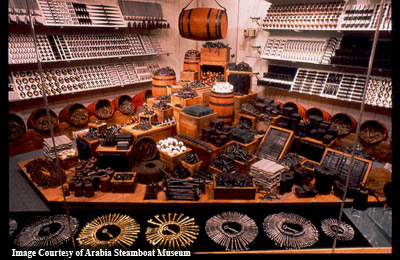One of the great privileges afforded by the internet is the opportunity to meet so many people from all over the world with like interests in early vehicles. We’ve enjoyed numerous visits with folks from Australia, Germany, Austria, Sweden, Great Britain, Canada, South America and countless areas throughout the U.S. Likewise, we recently assisted a French publication with details on early American farm and freight wagons.
On a similar note, this past week, we spoke with a family in Louisiana regarding a wagon brand that had eluded all attempts to have the maker identified. It’s just the kind of challenge that I love to take on. Making it a bit more intriguing, when I first saw the name, it was familiar, but I couldn’t immediately place it. I hate it when that happens. Yet, with other hot projects on the burner, I filed it away thinking “someday” I’d have time to look for the right information. Little did I know that this particular “someday” would happen less than 24 hours after seeing the first photo of the wagon. As irony would have it, while reviewing our archive files for another identification project, I ran headlong into the vehicle name I’d convinced myself I didn’t have time to look for… I wish all my research was this easy. Sometimes, it seems, a discovery is meant to be. In fact, this particular 19th and early 20th century builder has made a habit of seeking me out on several occasions.
The brand I uncovered in our archives is called – Hiawatha. It’s the same brand inquired about by the folks in Louisiana. Hand painted, the strong vibrant ‘Hiawatha’ logo is centered on the lowermost board of each side of the wagon. Oftentimes, this can be the name of the manufacturer. However, many makers built multiple brands, and in those instances, this area is typically reserved for the vehicle brand name. After reviewing additional construction and design features, I was able to conclusively determine the maker….
Okay, that’s enough buildup. ‘Hiawatha’ is a secondary brand for the legendary Gestring (pronounced Guess-String) Wagon Company. Some may recall that I wrote an extensive article a few years ago for Farm Collector magazine regarding Gestring. Since that time, I’ve had an opportunity to gather even more details on this company as well as view a number of additional vehicles built over a century ago by the Gestring family of craftsmen.
The beginnings of the Gestring Wagon Company date to before the Civil War. They were located just across the street from the legendary Luedinghaus-Espenschied wagon-making firm… were within shouting distance of the highly regarded Weber-Damme Company… And were just north of one of America’s most notable heavy vehicle builders – Joseph Murphy. Gestring finally closed its doors in 1935. At the time, it was hailed as the last of the hand built wagon-making firms. In all of our years of research, this Hiawatha wagon is the first we’ve been able to document. Gestring held a trademark on the name with 1878 being listed as its date of first use. We’d like to thank the Farquhar family for sharing these photos with us. It’s given us another opportunity to open even more doors of history while adding another exclusive ‘first’ to our identification efforts.
Got a question or topic for discussion? Drop us a line at info@wheelsthatwonthewest.com












